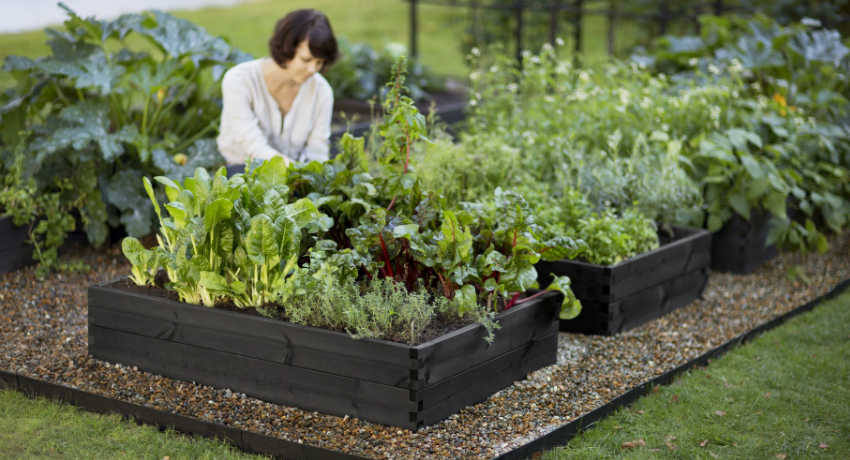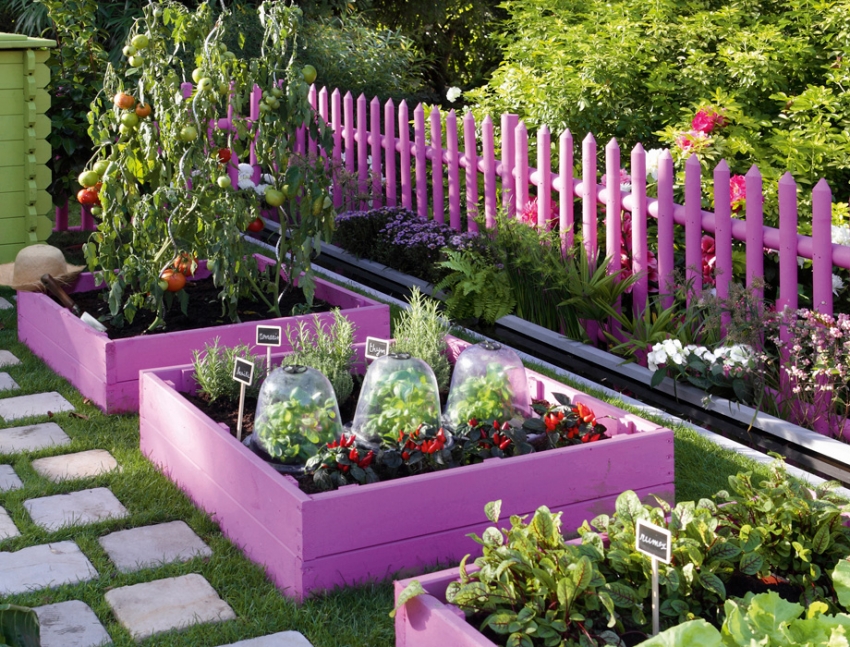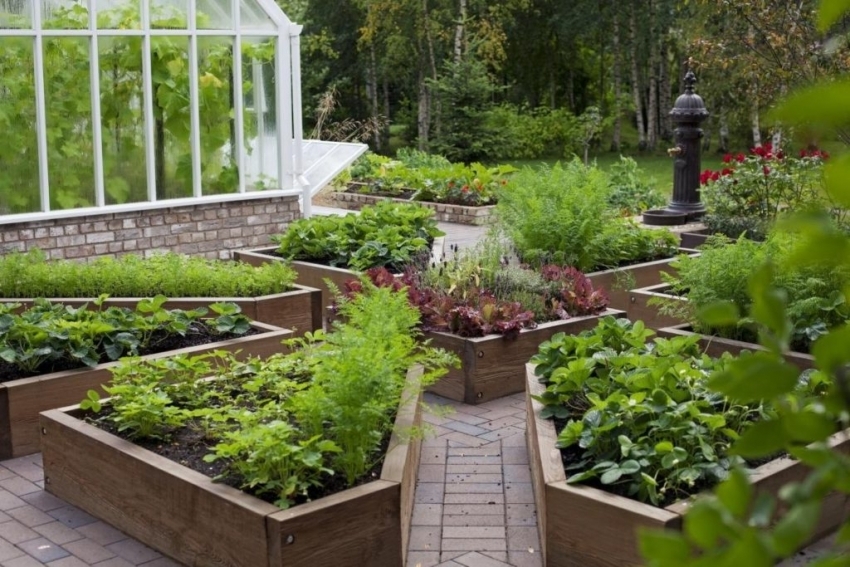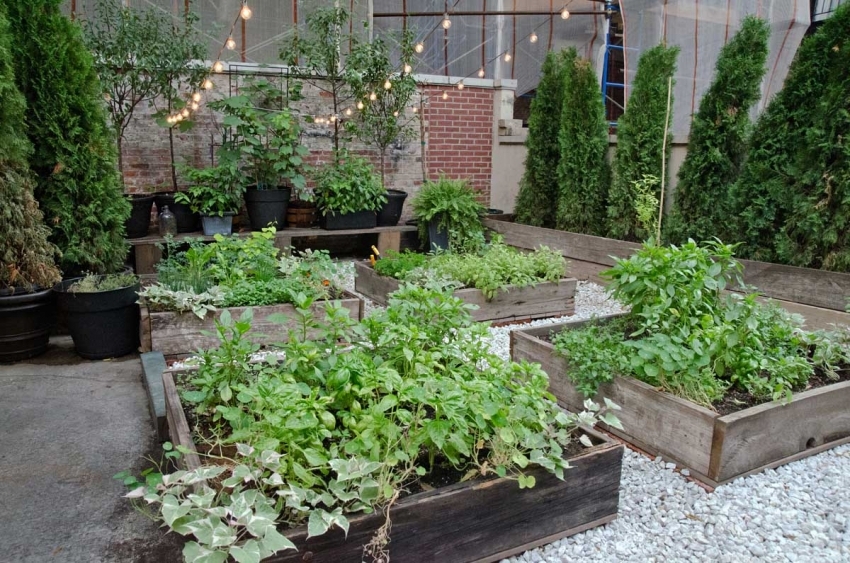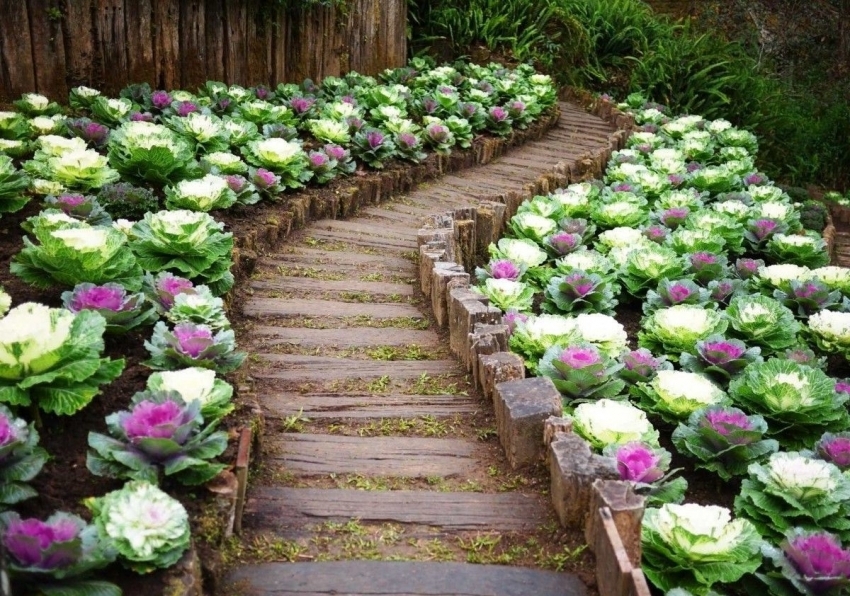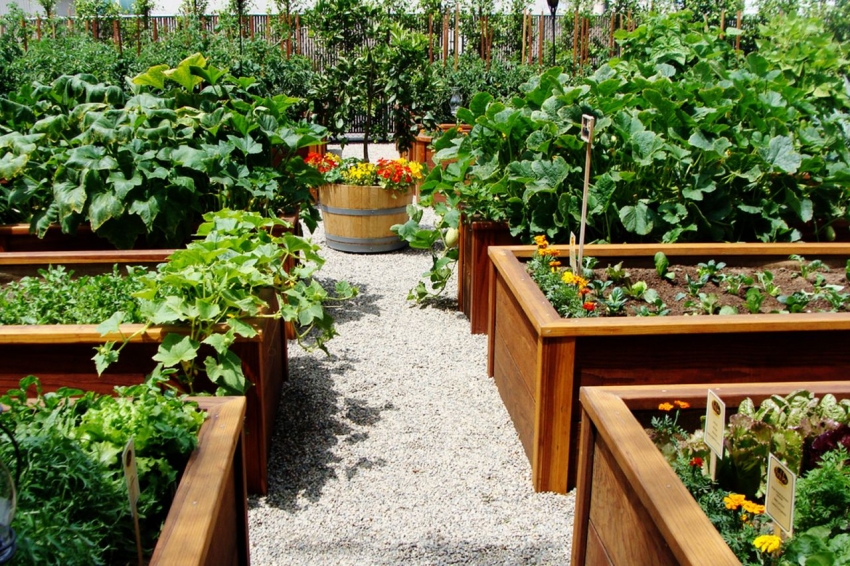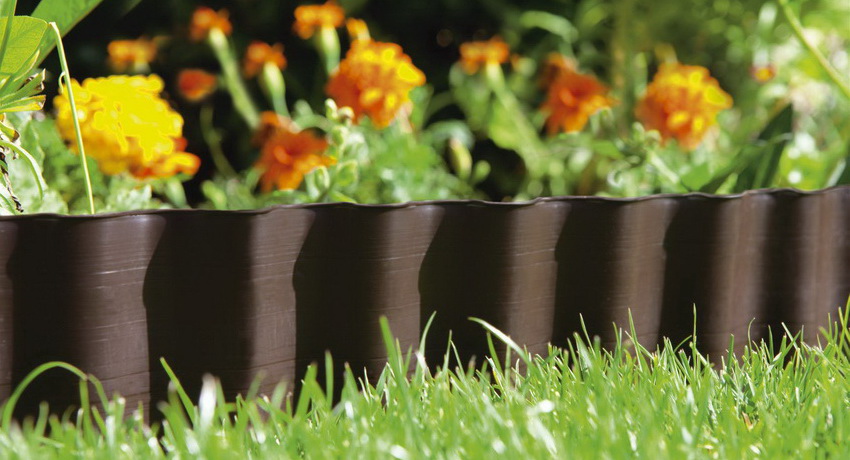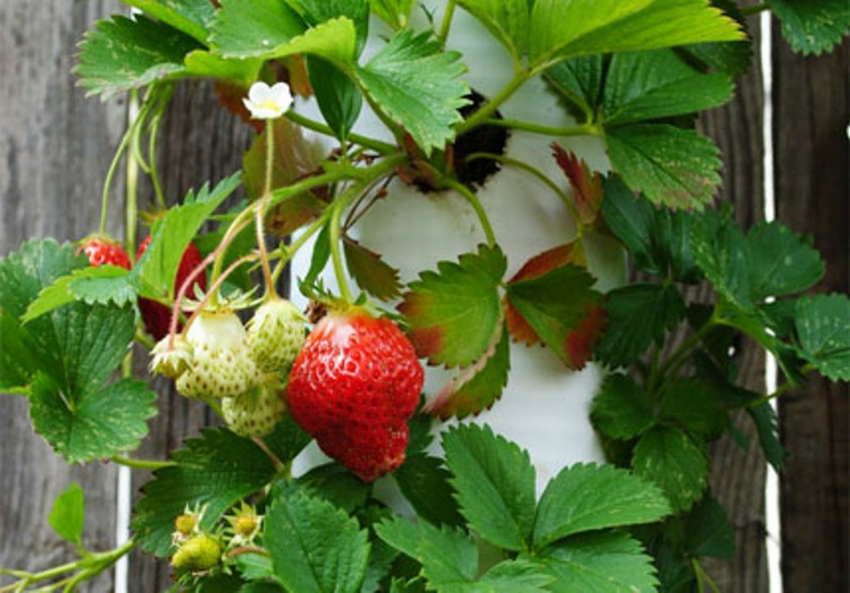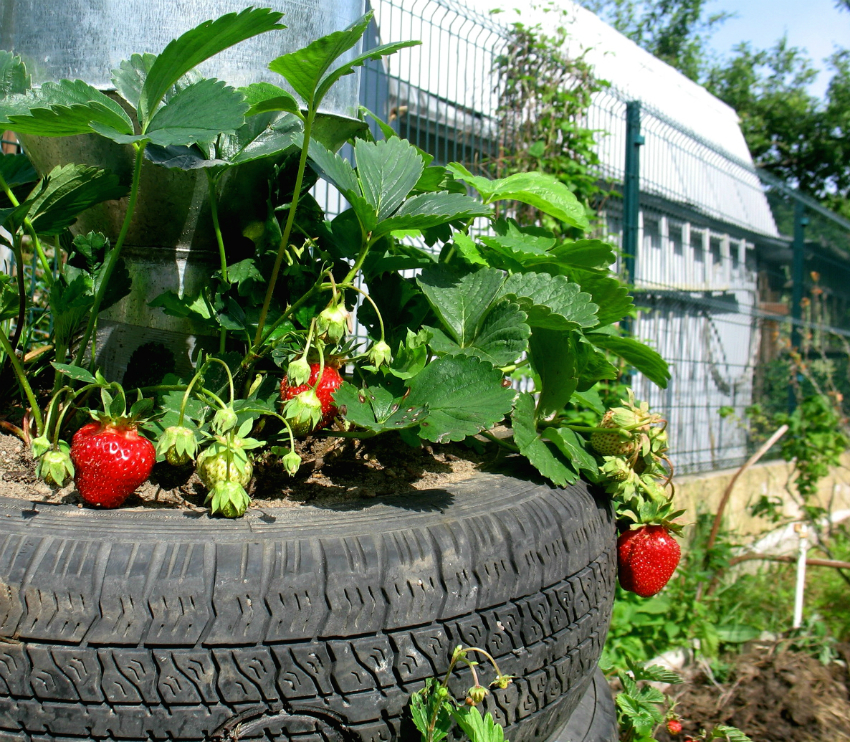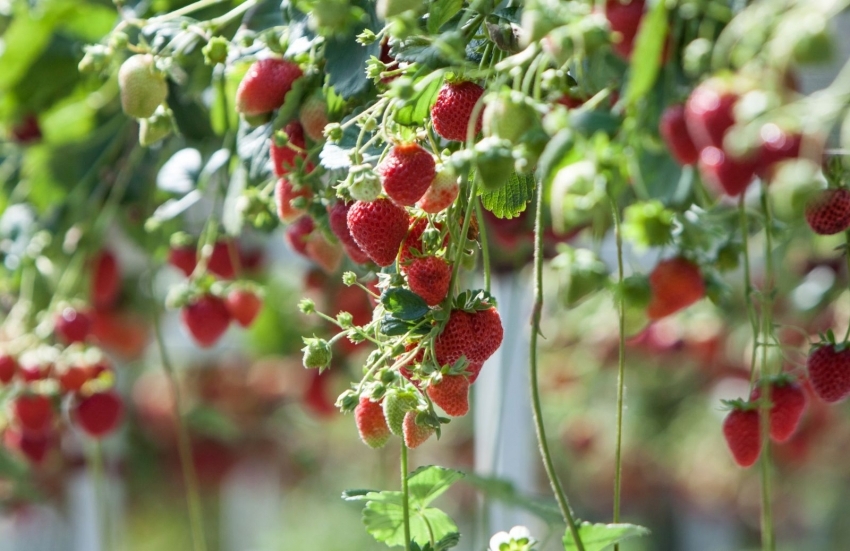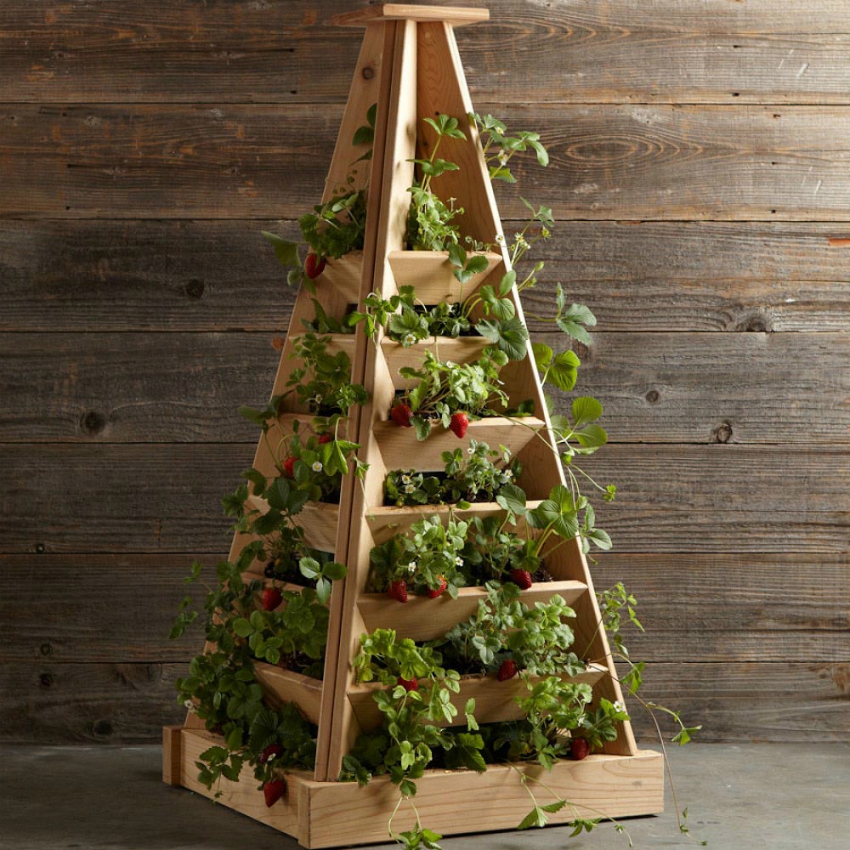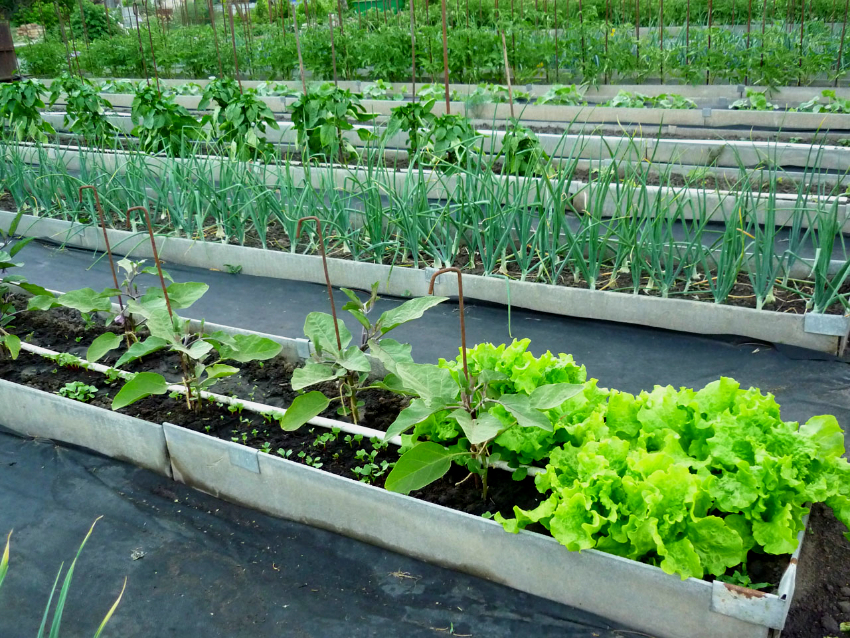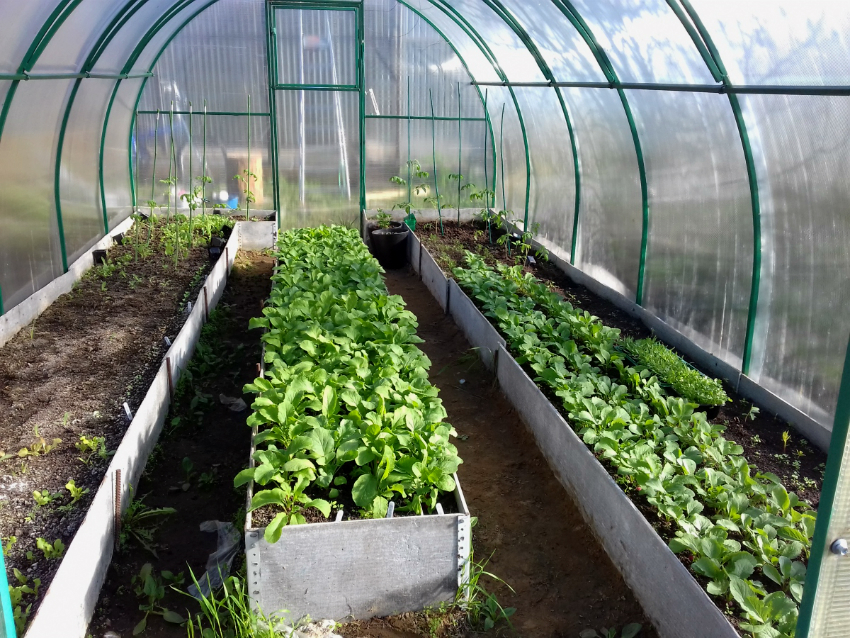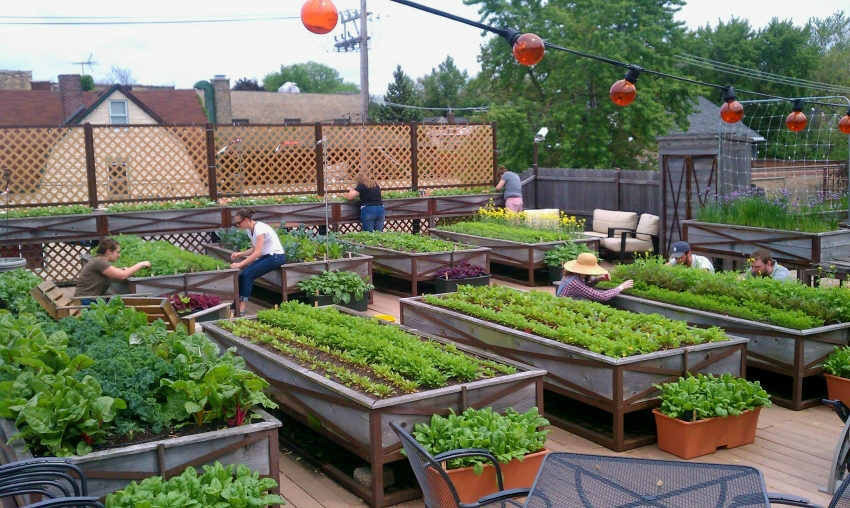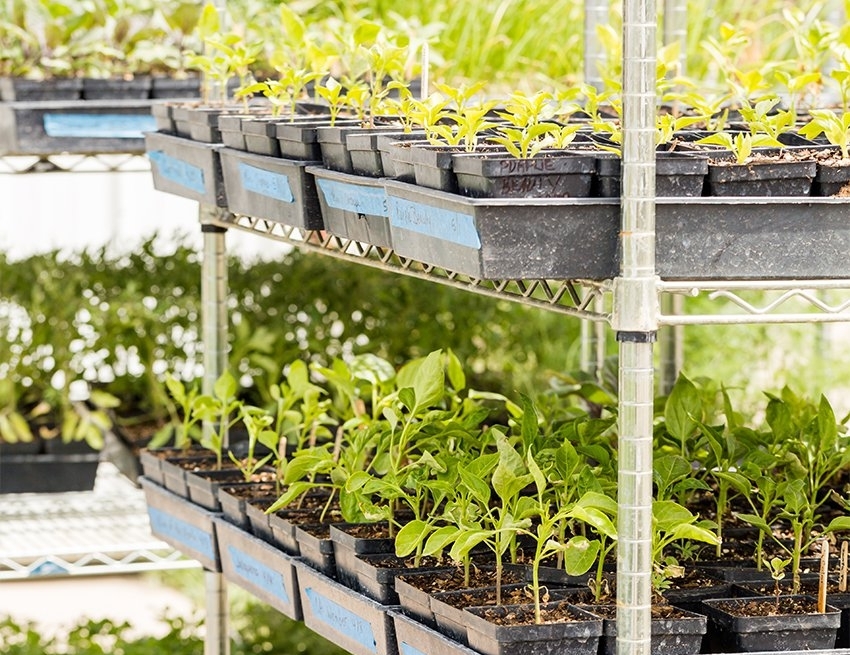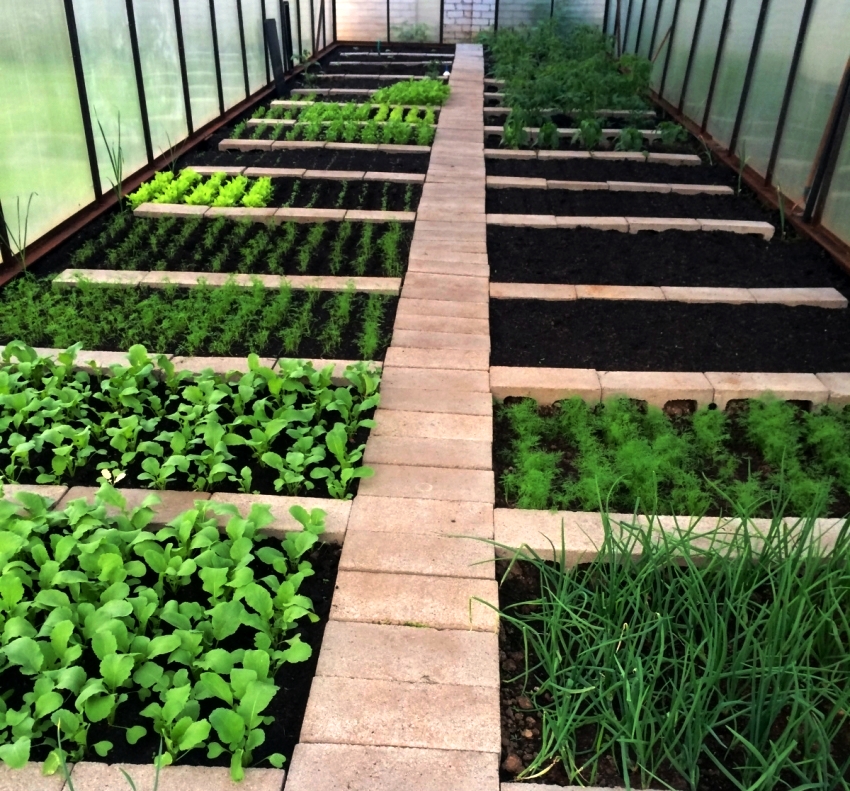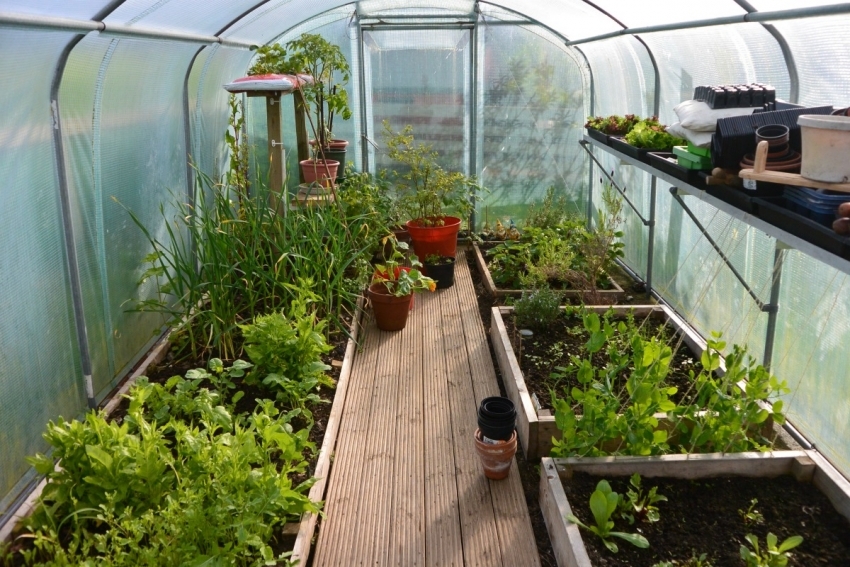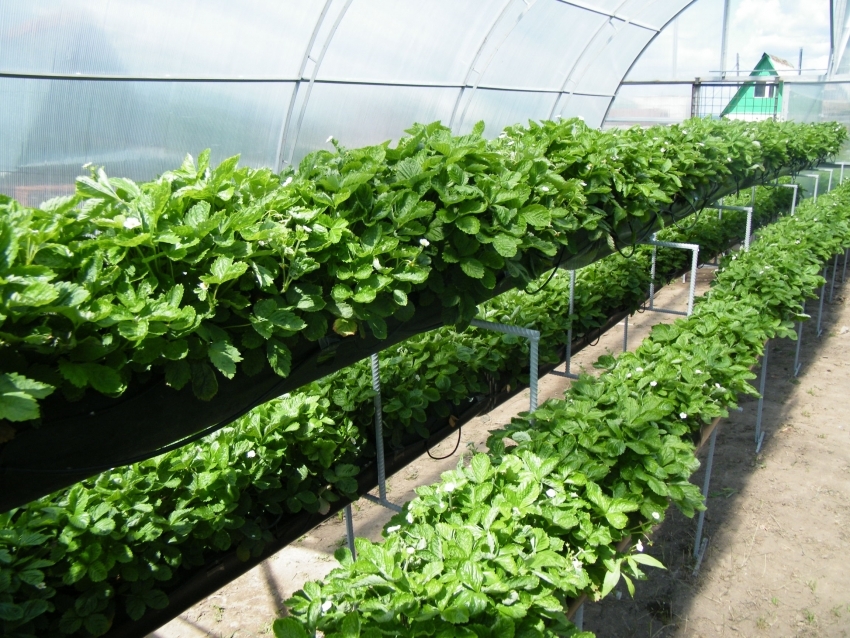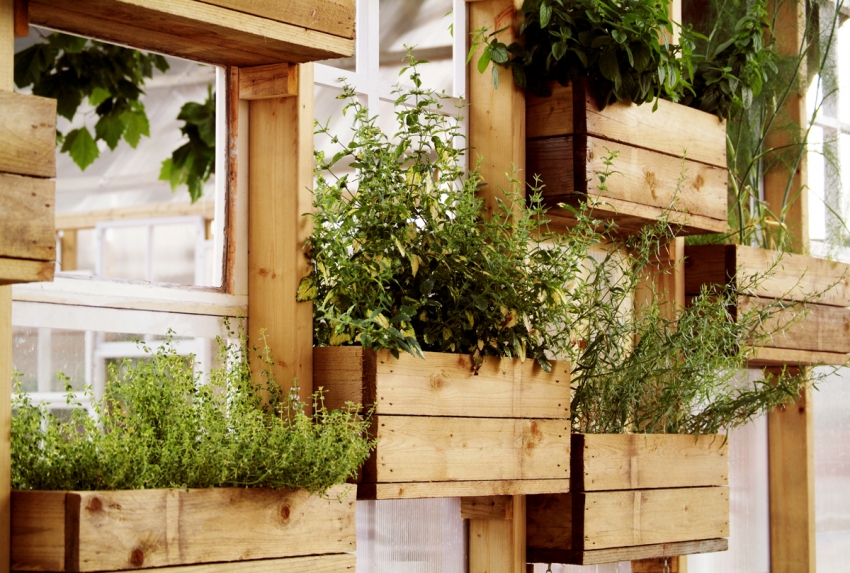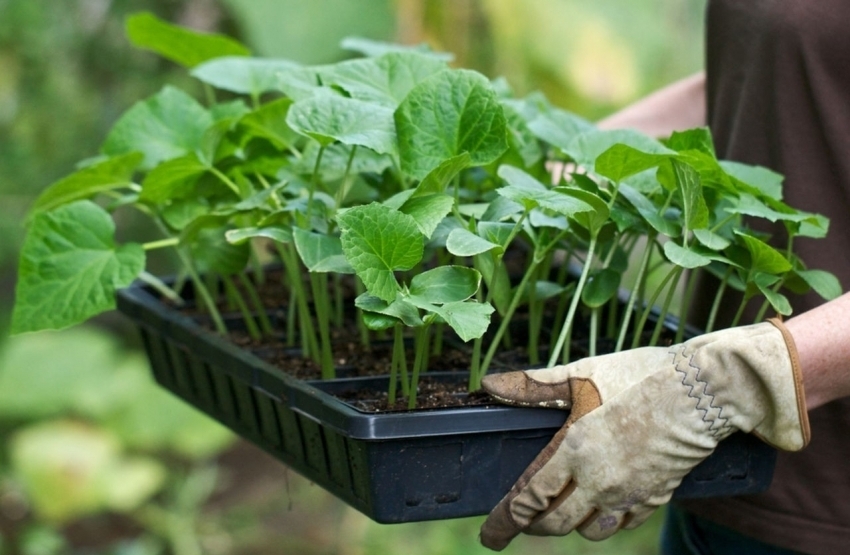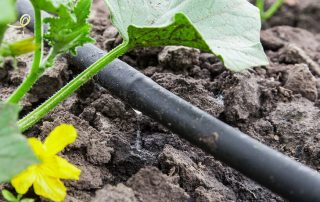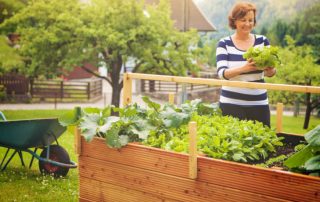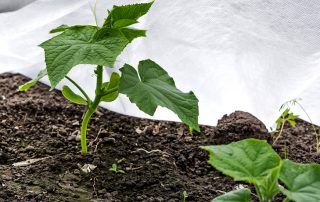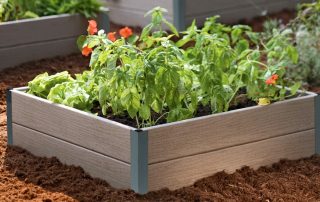From this article you can learn how to make beds with your own hands, not like everyone else: interesting ideas for creating a beautiful suburban area with an unusual design, good examples and photos, step-by-step technologies and recommendations. The information will help you navigate in the choice of a suitable design, material and think over the size, as well as the nature of the placement of beds for growing vegetables.
Content [Hide]
- 1 Do-it-yourself beds are not like everyone else: interesting ideas and recommendations for their implementation
- 1.1 Recommendations for designing a garden design with beds
- 1.2 Do-it-yourself garden beds in the country: how to make structures of the optimal size
- 1.3 Creating a decorative design for the beds in the country with your own hands: photos of beautiful paths
- 1.4 How to make a beautiful fence for the beds on the site with your own hands
- 1.5 Do-it-yourself examples of unusual beds in the country: photos and recommendations
- 2 How to create a strawberry bed with your own hands: photo and manufacturing technology
- 3 How to create a bed of slate with your own hands: photos and recommendations
- 4 Arrangement of a greenhouse: how to make beds in a greenhouse, photos and recommendations
- 5 Spring preparation of beds for various vegetable crops
Do-it-yourself beds are not like everyone else: interesting ideas and recommendations for their implementation
More often beds for summer cottages classified by the type of material on which they are made. However, the aesthetic and functional aspects of the issue are of no small importance. Therefore, before proceeding with the choice of material, it is worth deciding on the shape of the beds, their purpose and location on the site.
The planning phase is extremely important. On the network you can find many successful photos of decorating the beds in the garden for use on your site.Careful planning of the upcoming construction and drawing up an outline will save you from mistakes in the future, allow you to optimize work and get a beautiful neat vegetable garden.
Recommendations for designing a garden design with beds
In areas with a small area, it is recommended to select an angular version of the beds. In these situations, radial or beam staking out patterns are optimal. Plantings arranged in a radial pattern will also look good along the fence. They will fit perfectly into the design of the site, even if you include them in the design of the area in front of the house.
If the area of the summer cottage is large enough, then the central path will be the best place for arranging the beds. Along it, you can install rectangular or circular structures.
Helpful advice! Beds with flowers can easily replace beautiful beds created by your own hands, photos of homemade structures with planted cabbage, pumpkin or salads of different varieties look no worse. The combination of plants of various colors turns out to be spectacular.
If you plan to plant various vegetable crops, you should definitely take into account the compatibility of the selected plants, otherwise you can not hope to get a large harvest from the beds. Especially for these purposes, there are compatibility tables, where information is indicated on how successful the neighborhood of certain vegetables and plants will be.
Do-it-yourself garden beds in the country: how to make structures of the optimal size
Not the last place in the design of the beds is given to their size - height, length and width. The dimensional parameters of products have a direct impact on such nuances as:
- yield;
- protection of plantations from freezing;
- appearance beds;
- the level of complexity of construction;
- plant care system, its simplicity.
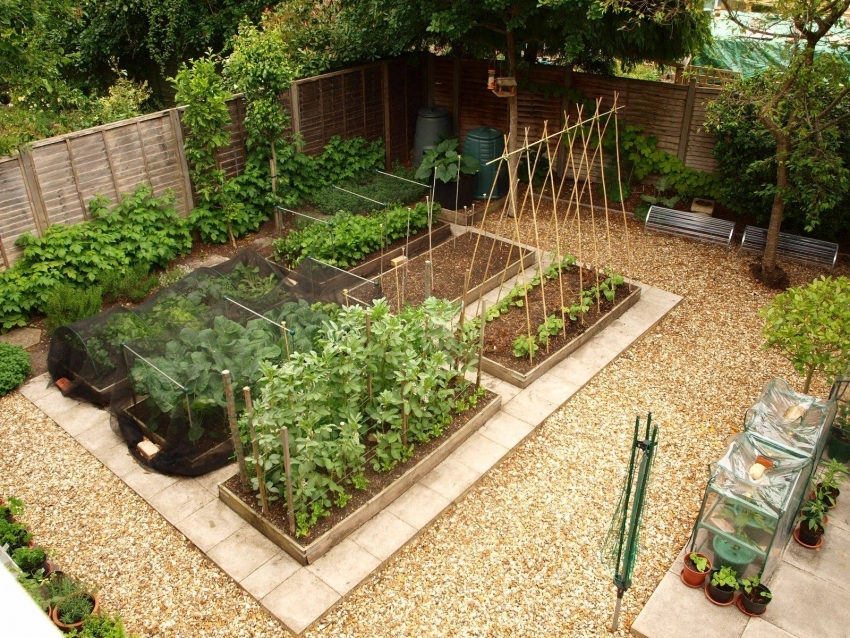
When designing beds, it is worth considering the minimum amount of land required for certain plants.
The width of the structures can be any. Most often, standard parameters are used - 80-90 cm. This is quite enough to plant plants in 3 rows. The beds, the width of which does not exceed 90 cm, are easy to use, since a person can reach its central part from either side on the sides. Therefore, if it is supposed to arrange narrow beds for vegetables, you cannot think of a more convenient option. Especially when it comes to planting plants near the fence. In this case, it is better to organize beds, the width of which does not exceed 50 cm. This will greatly facilitate the care of the plantings.
The height of the bed should be chosen more carefully. Plants planted on a hill are prone to freezing. This mainly applies to perennials, because the snow layer, which protects plantings from frost, accumulates in large quantities at ground level. In high beds, this system does not work, so they should be used exclusively for planting annual plants. Perennials feel better if the height of their beds does not exceed 15 cm.
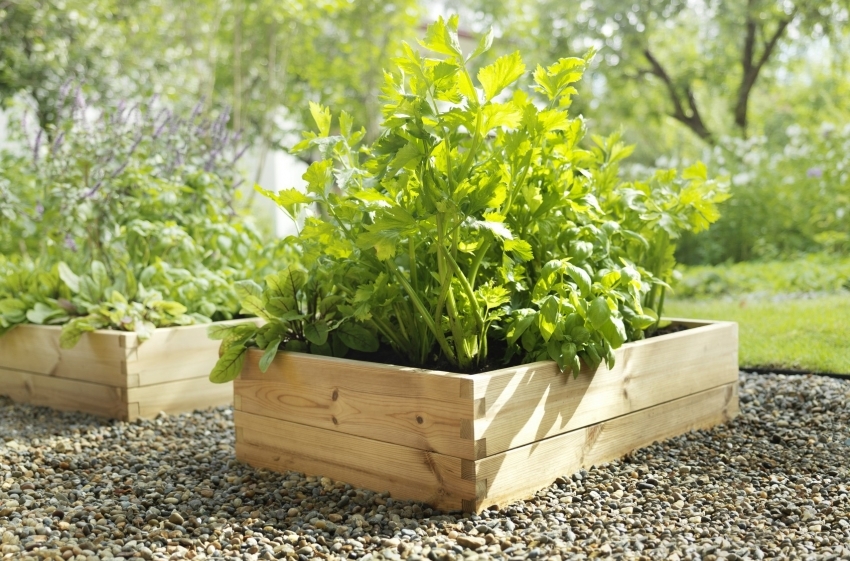
Perennial plants can be planted in separate boxes, which will simplify work with them for the next year
Creating a decorative design for the beds in the country with your own hands: photos of beautiful paths
During the design of the beds, you must not forget about the paths between them. Tracks can be made in different ways. Most often used for arranging paths:
- lawn grass;
- crushed stone;
- stone or paving slabs.
Functionally, the paths are not much different from each other, so their design is usually based on the personal preferences of the site owner.
Note!It is desirable that the paths are in harmony with the material for the beds.If these products are wooden, the paths can be sown with lawn grass or decorated with round tree cuts. For stone or brick beds, tiles, paving stones or rubble are suitable.
The paths on the site will serve as transport arteries, and will also decorate the garden, making it harmonious, neat and well-groomed.
The most common materials for making beds are stone, boards, brick. Finished products made of zinc-coated steel or plastic... Often, structures are made of flat slate for beds.
How to make a beautiful fence for the beds on the site with your own hands
The instructions for creating fences for beds are universal. First, the soil is prepared, then it is leveled. Marking is applied along the perimeter of the bed. After that, according to it, the material selected for the fence is installed. Some summer residents prefer to buy flat slate for the garden. Lovers of natural materials will love wood and stone. Plastic, brick and metal have optimal characteristics. Unusual gabion designs are a vivid example of a combination of metal mesh with brick or stone.
When creating borders for the garden with your own hands, you should adhere to certain rules:
- The fence shouldn't be too high. Otherwise, the plants will be in the shade, which will not benefit them. The optimal height is in the range from 10 to 30 cm.
- The framing should be neat. It should emphasize the shape of the beds.
- The material should be installed tightly so that the fertile soil layer does not spill onto the path. Thanks to this, during irrigation of the plantations, water will not spread beyond the boundaries of the garden.
The aesthetic side is also important. It is desirable that the fence is laconic and fits optimally into the landscape design of the site.
Do-it-yourself examples of unusual beds in the country: photos and recommendations
The beds are suitable for growing vegetables and herbs. Subject to a successful design in terms of decorativeness, they can compete even with flower beds and flower beds, offering not only beauty, but also a harvest.
Note!There are many design options for creating do-it-yourself beds, photos of the most successful examples can be safely used for inspiration. You just need to turn on your fantasy.
You can cope with the implementation of some interesting ideas on your own:
- high beds - a great option for those who do not want to bend low. This type of structure contributes to the rapid heating of the soil and the accelerated growth of plantings;
- round - require scrupulousness during the design and planting of plants. Tomatoes, carrots, cabbage and radishes, as well as beets will look spectacular on them;
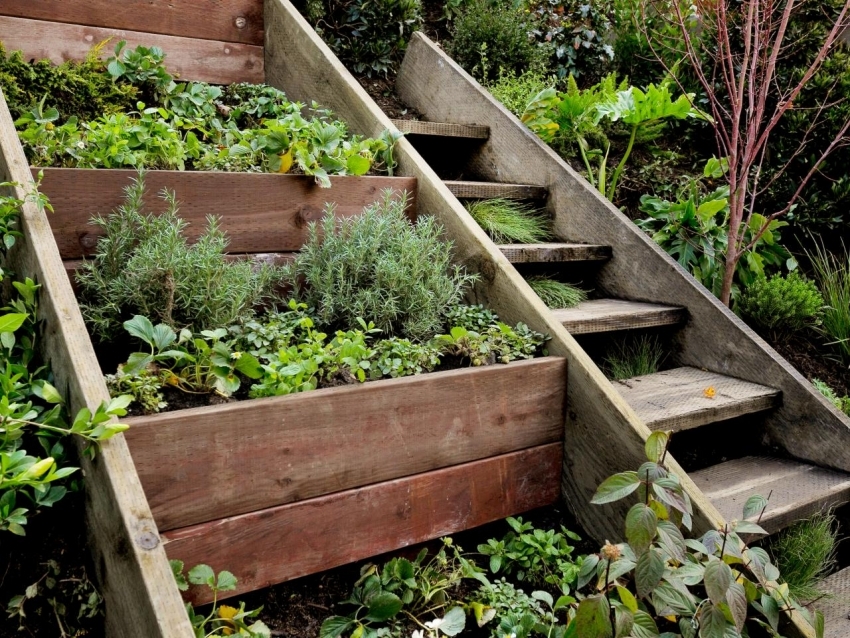
High slopes can also be used for planting fruit bearing plants and seasonings
- multi-level or "nesting dolls" - are used in small areas in order to save space;
- ladders - boards are used for construction. This type of bed is ideal for areas with a hilly landscape;
- vertical - most often such designs are represented by fixed boxes made of wood for seedlings or beds for strawberries made of plastic pipes. The products are fixed vertically to the wall, which saves space. Designs allow only certain types of plants to be grown. In addition to strawberries, it is allowed to grow cucumbers, lettuce, onions and herbs in them;
- hanging - designed for growing strawberries or greens. It is convenient to look after them, as there is no need to bend over.
Related article:
Garden curb tape: beautiful framing of garden elements
Advantages and disadvantages of fencing.Types of garden products by type of material and purpose, operational characteristics.
For arranging the beds, you can use any materials at hand. Even car tires, aluminum containers, wooden or plastic boxes, barrels will do.

In tall boxes you can organize warm bedswhich are distinguished by earlier warming of the soil
How to create a strawberry bed with your own hands: photo and manufacturing technology
Vertical or wall beds are suitable for growing strawberries. They make it possible to control the amount of moisture. Strawberries do not like waterlogging and quickly deteriorate, and the wall-mounted version of the products is able to create optimal conditions for its cultivation. In addition, the sensitive root system of the plant will be reliably protected from freezing in early spring and sudden temperature changes.
Note!Vertical beds can be wrapped spunbond, the price per meter of this material is much lower than the cost of the film for covering the beds.
The advantages of wall and hanging beds include significant space savings. To install structures, you can use:
- veranda or terrace;
- space along the fence;
- the wall of a summer kitchen or an outbuilding.
Average cost of a spunbond:
| Name | Colour | Size (width, length), m | Density of the material, g / m2 | Price, rub / roll |
| SL-17 | white | 3.2x10 | 17 | 196 |
| SL-30 | 3.2x10 | 30 | 280 | |
| SL-60 | 3.2x10 | 60 | 500 | |
| SL-15 | 3.2x500 | 15 | 4875 | |
| SL-17 | 3.2x500 | 17 | 5535 | |
| SL-30 | 3.2x300 | 30 | 5950 | |
| SL-60 | the black | 3.2x10 | 60 | 500 |
| SL-60 | 3.2x150 | 60 | 5950 | |
| SL-100 | 1.6x200 | 100 | 6610 | |
| SL-150 | 1.6x150 | 150 | 7435 |
For growing strawberries, you can make a bed from plastic pipes, car tires, bags, cylindrical containers, mesh, bottles and other materials.
How to make your own strawberry garden from car tires
The size of car tires is not important for creating a garden. If the tires differ in size from each other, a multi-tiered structure can be made.
Car tires are first prepared for work: thoroughly cleaned, washed and dried. After that, the material is painted in any color you like. On the sides, at the same distance, holes are made. They must be large enough to plant strawberries. For the structure to be stable, a plastic pipe is needed. Its length should correspond to the height of the future bed. Holes should be made along the entire circumference of the pipe along its entire length.
Next, the first tire is installed in the area where the bed will be located. A plastic pipe is installed vertically in the center, the space inside the tire is filled with soil.
Note! Beforehand, the pipe should be wrapped in a synthetic cloth.
The remaining tires are stacked in a similar way and filled with soil. When the bed is ready, the pipe is filled with water. Through the holes made in it, the liquid will flow into each tier of the structure. All that remains is to plant the strawberries through the holes in the tires.
How to make a strawberry bed from a pipe yourself
For arranging such structures, plastic pipes are suitable, which could remain in the house after repairs. For work, you need two types of pipes. The diameter of one of them is 2 cm, and the second is 15 cm or more. In a pipe with a large diameter, holes should be made in a size that allows planting strawberries. Small holes are made in the smaller pipe for watering the plants.
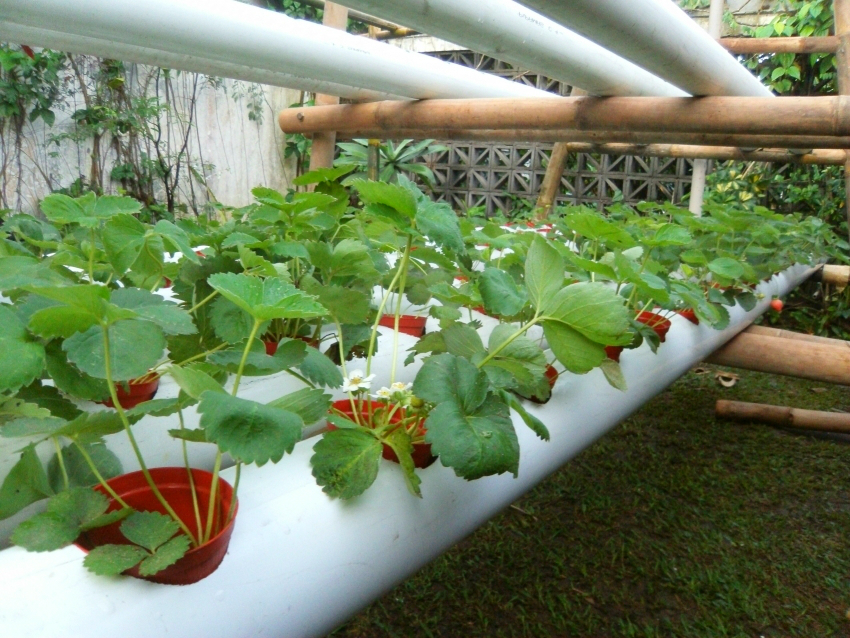
For horizontal cultivation of strawberries in pipes, care must be taken irrigation system, this requires a built-in hose and pressurized water
The pipe length can be any. This parameter depends on the design of the bed, which can be made from a large number of segments (length 0.5 m), fixing them in a checkerboard pattern on a wall or mesh, or using several long pieces. A smaller plastic product is inserted into a large pipe, and the space between them is filled with soil.
The advantage of vertical strawberry beds is that modern plastic is resistant to sunlight. It does not overheat, and the structure itself is easily fixed in any convenient place.
Interesting fact!Plastics and the first products based on it appeared as substitutes for natural materials. Scientists were looking for an alternative to the use in the production of such expensive raw materials as mother of pearl, wood and ivory. For the manufacture of organic plastic, rubber was used. The synthetic analogue used today was obtained at the beginning of the 20th century, thanks to the use of phenol-formaldehyde resins.
Making multi-tiered strawberry beds with your own hands
It is also possible to grow strawberries in high beds. For these purposes, structures in the form of shelving are suitable. It is not uncommon to see beautiful photos of the greenhouse beds in the form of shelves, made by hand or bought in a store. Moreover, in such structures, not only strawberries are grown, but also other types of plants. Ready-made racks can be used as shelves for storing pots or containers of strawberries. If these structures are installed inside the greenhouse, the berries will ripen faster.
Multi-tiered flower beds can be made independently by building a pyramid from boxes of different sizes. For the manufacture of structures, wooden boards are used, from which square or rectangular products are knocked down. Dimensional parameters are selected with the expectation that subsequently the boxes will be installed on the principle of matryoshka one on top of the other. As a result, the largest item will be at the base of the pyramid, and the smallest at the top.
The boxes are filled with soil where the seedlings are planted. When the strawberry bushes grow, the structure will turn into a blooming pyramid. Wood products can also have more unusual shapes. The beds in the form of an octagon look very impressive.
Helpful advice!A multi-tiered garden bed can be made from available tools, such as plastic bottles. For this, the product is cut lengthwise. It is necessary to cut a rectangle in the side of the bottle so that the neck with the lid and the bottom remain intact, otherwise the earth will spill out. The bottles form dense rows of beds on the wall of a building or on a fence. To save space, you can lay out one row above the other.
Manufacturing technology for strawberry beds from bags
The easiest way to organize vertical strawberry beds is to use bags for this purpose. This method is economical. To equip the beds, you will need to purchase bags made of high density polyethylene. Ordinary burlap products or handmade from any dense material will do.
Products made from natural materials are distinguished by their durability and environmental friendliness, they are better perceived by plants, since they have excellent throughput. If the bags are made by hand, it is recommended to reinforce the bottom and sides by additionally stitching with strong threads. After the products are ready, they need to be filled with soil and cut 15 cm long. Strawberry bushes will be planted in them. A strong loop should be attached to the top of the bag to fix the bag on the support.
After planting the plant, they must be watered. The bags themselves are staggered.
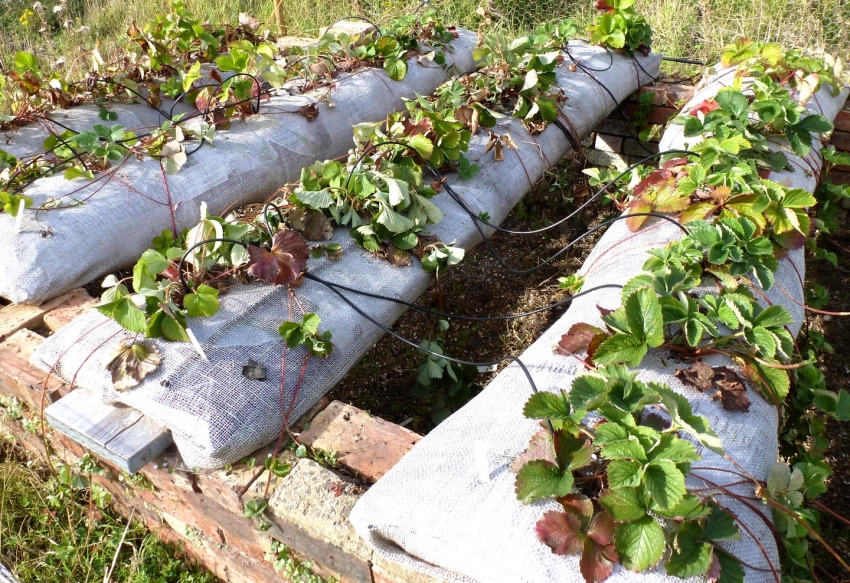
An example of using the technology of growing strawberries in bags, which allows you to pick berries clean - without sand and earth
How to create a bed of slate with your own hands: photos and recommendations
Slate is very easy to use, so summer residents willingly create beds for vegetables and herbs on the basis of it. Such structures keep the ground well within a well-defined area. At the same time, the beds look neat and attractive.
Advantages of asbestos cement boards:
- Possibility of making very long garden beds.
- The material tends to heat up quickly. By increasing the temperature of the soil by several degrees, slate accelerates the process of getting nutrients to the plants.
- Practicality and simple system of use.
- The low price of flat slate for beds reduces the cost of construction.
- Long service life.
- Attractive appearance.
Helpful advice!If desired, asbestos-cement sheets can be painted in any color you like to improve the design of the site.
In addition to advantages, the material also has disadvantages. Many experts note the harm of flat slate for beds, because due to overheating, the products contribute to the accelerated evaporation of moisture from the soil, which negatively affects the plants in the heat. In addition, during the rains, soil erosion occurs and light slate sheets tilt, so the owner of the site will need to constantly adjust their position.
DIY slate bedding technology
Wave asbestos cement sheets are used as a finishing material for roofing. The remains of the product can be used to equip the beds on the site.
The sequence of making beds from corrugated slate:
- The material is cut into pieces of the required size.
- On the site, the boundaries of future beds are marked, the soil is prepared. A trench is dug into the ground, the depth of which is half the height of the previously prepared pieces of slate.
- The workpieces are placed in a trench, set in the required position and fixed with soil, which is used to fill the hole. The soil must be tamped.
- To keep the sheets stable, you can use metal pegs to fix them.

Slate is a durable and at the same time fragile material, so you need to be careful when working with tools
Slate sheets can have horizontal or vertical wave placement. If horizontal wave material is used in the construction of the beds, the shoots of some plant species will run along the grooves. Therefore, you should carefully dig up the soil so as not to damage the fence.
Helpful advice! Vertical wave slate can be used to overcome this difficulty, but this type of material is more difficult to cut.
DIY technology for making beds from flat slate
If it is planned to manufacture structures from corrugated sheets, then the construction of beds will be accompanied by a minimum amount of waste. In this sense, flat slate is less convenient and practical. It is recommended to use asbestos-cement sheets for the manufacture of beds, the length of which is 1.75 m.
The process of making the beds is as follows:
- The workpiece is cut into two pieces. The length of one segment is 0.7 m, the second is 1 m.
- A trench 0.2 m deep is dug into the ground.
- The prepared slate elements are installed in the trench. Then they are covered with soil, which is carefully compacted.
- Metal corners are prepared, which must be cut to obtain the required size.
- Holes are made in the corners, where bolted connections will subsequently be located.
- Metal elements are bolted to the slate sheets.
- In order to prevent the appearance of corrosion and accelerated deterioration of the metal, the corners should be coated with a primer or a paint composition to protect against the negative effects of moisture.
- After the material dries, the bed is filled with organic fertilizers. For these purposes, compost, wood particles, brushwood are suitable. All this is mixed with the soil and poured into the structure.
Important! Slate is considered a fairly strong material, but it has a fragile structure. It is not allowed to drive asbestos-cement slabs into the ground, otherwise they will break. Therefore, the material is installed only in the way described in the technology.
Buying slate sheets for beds: the price of products and preparation for use
For cutting asbestos-cement sheets, it is better to use a grinder. This type of tool copes with cutting any material, including slate, pipes, iron, etc.
There is one caveat when working with a grinder. When cutting the material, the tool must be turned so that the dust blown away by the wind flies to the side.
Asbestos-cement dust is dangerous to human health, therefore, when working with sheets, it is imperative to wear safety glasses and a cotton-gauze bandage. It is strictly forbidden to use a saw designed for working with wood to cut slate. A person in such conditions runs the risk of serious injury.
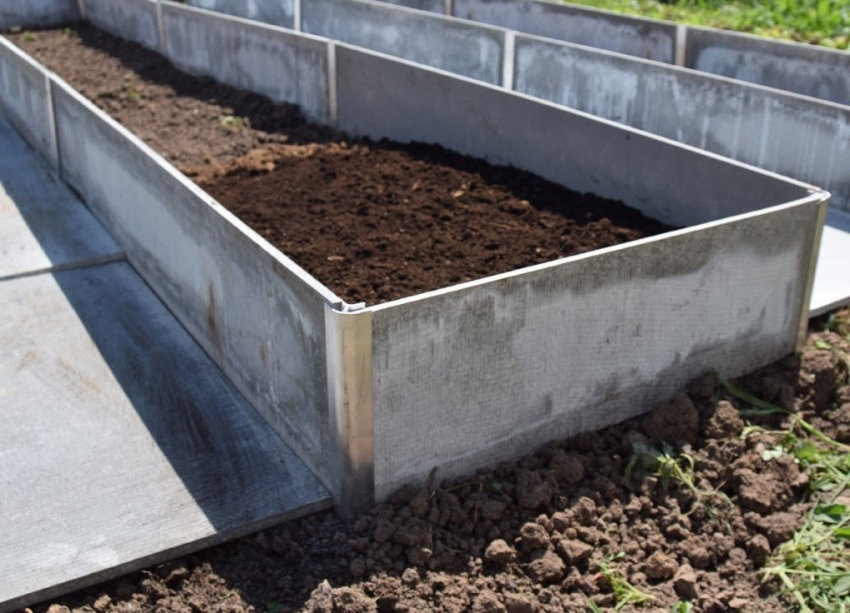
The soil in the beds of asbestos-cement sheets heats up faster, so the plants yield earlier than on open soil
Most often, for the construction of beds, the remains of slate are used after they have covered the roof of the building. This applies to corrugated sheets. The assortment of many stores allows you to buy ready-made strips for slate beds.
Average prices for asbestos-cement strips for beds:
| Product size, cm | Product thickness, mm | Number of items in a package, pcs. | Weight, kg | price, rub. |
| 150×25 | 6 | 400 | 4,6 | 70 |
| 150×30 | 400 | 5,5 | 83 | |
| 175×24 | 400 | 5 | 72 | |
| 175×30 | 400 | 6,3 | 82 | |
| 150×20 | 8 | 400 | 4,9 | 68 |
| 150×25 | 400 | 6,2 | 78 | |
| 150×30 | 400 | 7,4 | 93 | |
| 175×24 | 400 | 6,6 | 84 | |
| 175×30 | 400 | 8,3 | 109 | |
| 300×30 | 250 | 14,7 | 210 | |
| 150×30 | 10 | 400 | 8,7 | 108 |
| 175×24 | 400 | 8,2 | 102 | |
| 175×30 | 400 | 8,7 | 126 | |
| 300×30 | 200 | 17,4 | 229 |
Arrangement of a greenhouse: how to make beds in a greenhouse, photos and recommendations
A competent choice of greenhouses and the correct arrangement of the beds ensure a rich harvest. Greenhouses with a size of 3x6 m are in high demand among summer residents. This option is optimal if the area of the site is small. Most often, greenhouse houses are made from polycarbonate sheets. The material has high strength (stronger than glass), has good transmission capacity, while scattering direct sunlight. Such structures can be easily assembled and disassembled, convenient in transportation due to their mobility and low weight.
Note!The greenhouse can be made of materials such as glass, wood, film. In stores, you can buy ready-made designs or start creating them yourself.
Features of the arrangement of beds in a 6x3 greenhouse: photos and tips for placing structures
Land owners often resort to the use of greenhouses 3 by 6. How to arrange the beds inside such structures at the same time worries many summer residents. Incorrect placement of plantings relative to the cardinal direction or miscalculation in relation to wind loads can lead to a decrease in yield or death of seedlings.
When starting the interior arrangement of the greenhouse, it is recommended to focus on the cardinal points:
- Low crops need a lot of sunlight. To provide them with the necessary level of lighting, it is advisable to deploy the greenhouse from north to south.
- If the heifer will be used for growing tall crops, the beds should be placed from west to east. This placement pattern will allow sunlight to penetrate between the rows of plants where dense foliage obscures the soil. As a result, the lower level of the seedlings will be illuminated.
- The surface of the site can be sloped.In such cases, it is recommended to install the beds on a stepped system, and turn the greenhouse itself to the south side. Thus, the plants will be placed on top of each other and receive equivalent sunlight.
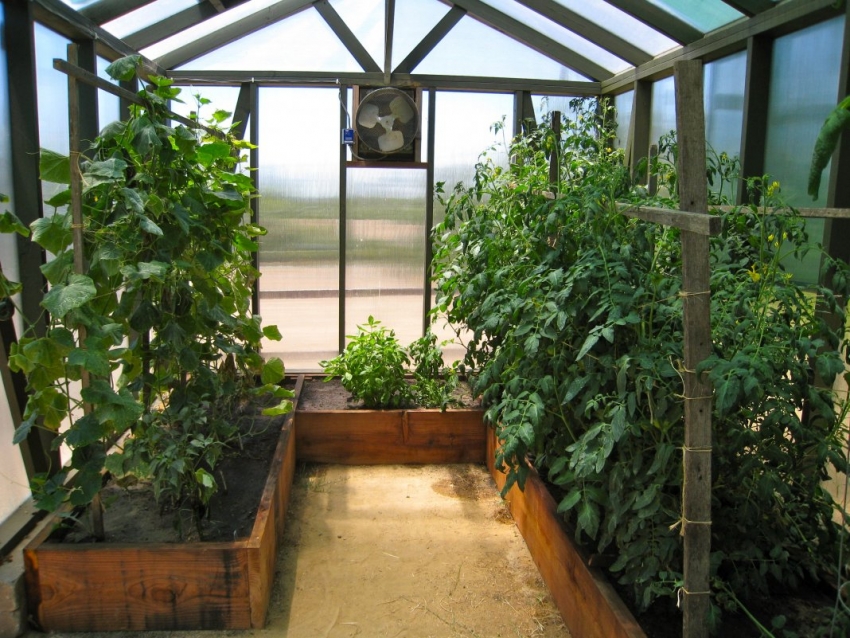
Tall beds are very convenient for small greenhouses - this allows you to grow different plants nearby
Popular layouts of beds in a 3x6 greenhouse: photo, how to make an optimal layout
A competent layout inside the greenhouse house allows you to optimize the space and get a large harvest from plantings. For this reason, summer residents and gardeners strive to make the most of the entire free area.
Helpful advice!Optimization of space must be competent so that subsequently there are no problems with caring for plants. It is not necessary to make a large width of beds in a greenhouse 3 meters wide. Large structures will make it difficult to care for plants. When planning the construction of beds, you need to take into account the physical capabilities of a person.
Popular layouts of beds inside a greenhouse house:
- A pair of wide beds for the entire length of the structure - the width of the structures will be 120 cm each, with a path between them. The width of the passage is 0.6 m. This layout of the beds has a certain disadvantage. Some people may have difficulty getting to the crops along the edges.
- Three beds of the same size with two aisles between them - the width of the paths between the beds will be 0.6 m. In comparison with the previous version, this scheme has a smaller planting area, but facilitates the system of caring for them.
- A wide bed in the center of the greenhouse with paths on each side - the width of the structure is more than 1 m. The remaining space is occupied by approaches to it from each side. This scheme assumes the use of a small area for organization of the garden, but the plants will receive the maximum amount of light.
- Several planting rows of small width around the perimeter and one large bed in the central part of the greenhouse.
The interior layout of the greenhouse house largely depends on the vegetable crops and plant varieties that will be grown. Each type of seedling needs a specific microclimate, so crops with similar needs should be selected.
DIY greenhouse gardening: alternative methods of placing structures
When choosing the optimal placement for the beds in height, you need to take into account the climatic conditions of the region. This indicator varies in the range of 20-50 cm. As a result, unhindered access to plants is provided, and the likelihood of accelerated drying out of the soil is excluded. For the construction of such beds, polycarbonate, brick, board or slate are usually used. To increase the yield, it is recommended to lay waste on the bottom of the structures. Chips and rotten tree bark, deciduous or straw filler, dust will do.
Helpful advice! If the waste is poured with boiling water and covered with manure on top, the fermentation process will start, decay and heat generation will accelerate. As a result, plant growth and crop quality will improve.
The vertical placement of the beds in the greenhouse will save usable area and increase the yield. Structures can be positioned in several ways:
- garters - the method is used for growing crops that need a garter to the supports. A partition, plastic mesh, or shield can be used to create a vertical surface. In the process of growth, plants stretching upward will cling to the base;
- shelves - structures in the form of boxes are placed one above the other. The height is adjusted to suit the needs of the plants. It is advisable to use this method for small crops with a shallow root system;
- plastic pipes - holes are made in the products, where soil is poured, and plants are planted. These beds are fixed in an upright position, suitable for strawberries and strawberries.
Spring preparation of beds for various vegetable crops
The yield of the garden bed depends on many factors. To achieve good results, it is important to properly prepare the site.
The cultivation of each individual crop has its own nuances. For example, preparing a bed for carrots in the spring will be easier to do if you do all the necessary work in the fall. In order for the harvest to be rich, it is recommended to mix a little sand into the seeds. To grow cucumbers, you will need to add a lot of compost to the soil, and not fresh, but prepared in advance. By steaming the ground with boiling water, you can get rid of harmful microorganisms. For these purposes, a pinkish solution of potassium permanganate is also suitable.
The process of preparing a bed for onions in the spring is practically no different from the scheme according to which carrots are planted. These crops have similar growing conditions and can make great neighbors. It is also recommended to mix a small amount of sand with onion seeds. Subsequently, he will facilitate the harvest. Garlic needs mineral fertilizers and lots of sun, and tomatoes like organic fertilizers. To obtain a rich harvest of potatoes, double digging of the soil will be required in autumn and spring. Beets grow well on the ground with compost or humus.
